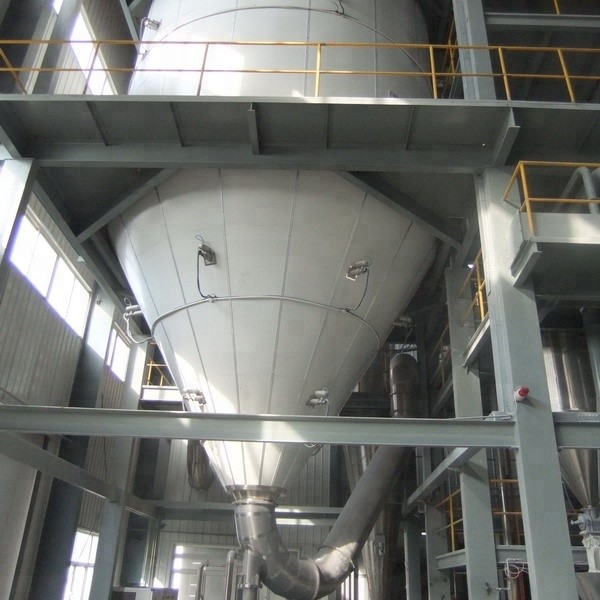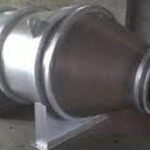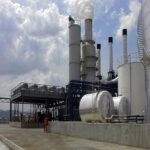- Home
- portfolio
- Turnkey Plants
- MICROCRYSTALLINE CELLULOSE POWDER
MICROCRYSTALLINE CELLULOSE POWDER
Turnkey Plant
- Aloe Vera Powder Plant
- Coconut Milk Powder Plant
- Egg Powder Plant
- Fish Protein Hydrolysate Powder Plant
- Fruit Powder Plant
- Ice-Cream Mix Powder Plant
- Lactose Powder Plant
- Malt Powder Plant
- Microcrystalline Cellulose Powder Plant
- Non-Dairy Creamer Powder Plant
- Pectin Powder Plant
- Soy Milk Powder Plant
- Sugarcane Juice Powder Plant
- Tamarind Extract Powder Plant
- Zinc Sulphate Powder Plant
- Zero Liquid Discharge System
MICROCRYSTALLINE CELLULOSE POWDER

USES AND ADVANTAGES OF MICROCRYSTALLINE CELLULOSE POWDER (MCCP)
- MCCP is most widely used direct compression excipient serving as a strong dry binder, tablet disintegrator, an absorbent, filler or diluent, a lubricant, and anti-adherent.
- Microcrystalline cellulose (MCC) is used as a food additive in the production of bakery, confectionery, meat, dairy and other products.
- In smaller quantities, MCC is used in oil drilling, paints, cosmetic products, heat shields, and even flame-resistant board.
TYPES OF MCC POWDER WHICH CAN BE MANUFACTURED IN OUR SUPPLIED PLANT.
MCC Type
Particle size (micron)
Utilization
PH 101
50
It is most widely used for direct compression tableting, for wet granulation, for spheronization, and in capsule filling processes
PH 102
100
It is used as the PH-101, but its larger particle size improves the flow of fine powders
PH 103
50
It has the same particle size as PH-101 with lower moisture content (3%), so it is used for moisture-sensitive pharmaceutical active ingredients
PH 112
100
It has the same particle size as PH-102. It has lower moisture content (1.5%). It is used for high moisture-sensitive pharmaceutical active ingredients
PH 200
180
It has a large particle size with increased flowability. It is used to reduce weight variation and to improve content uniformity in direct compression formulations and in wet granulation formulations
PH 301
50
It has the same particle size as PH-101 but is denser providing more flowability and tablet weight uniformity. Useful for making smaller tablets and in capsule filling excipient
sMCC
Slicifed MCC
Special
Co-processed with Lactose, Mannitol, Calcium Silicate etc.
PH 101, 102 and 112 can be manufactured in single step in the plant supplied by us. Other grades can be manufactured with additional equipment.
PROCESS DESCRIPTION:

1 PULP SHREDDING MACHINE
A modified type of paper shredder is used to shred dissolving pulp sheets. The shredding is done in controlled manner and large parts can be recycled for shredding. Shredding is done to use the reactor volume in effective manner and fast and proper biomass formation during the acid hydrolysis. Shredding ensures higher yield and uniform digestion of the pulp during hydrolysis.
2. PNEUMATIC TRANSPORT AND PULP WEIGHING SILOS.
The shredded pulp is either manually loaded into Hydrolysis reactor or it can be completely automatic operation with pneumatic conveying system and pulp storage silos feeding to hydrolysis reactors.
3. ACID HYDROLYSIS REACTORS.
The reactor (either glass lined or full stainless steel depending on the mineral acid used for hydrolysis) is filled with acidic solution of specific PH and acid molarity with predetermined quantity. The shredded pulp is gradually loaded into reactor and mixture is kept in agitation. The Agitator rotates at fixed speed predetermined on the basis of pulp type used. The reaction between the pulp and acid happens at fixed temperature, pressure as per required degree of polymerization. The solution prepared in the reactor is transferred for further process.
4. FILTRATION, NEUTRALIZATION AND WASHING.
The slurry prepared in the hydrolysis reactor is continuously pumped to a batch type filter press, or RVDF or Belt Filter depending on the choice of manufacturer. Here the slurry is first filtered through a predetermined filtration cloth, washed with RO water and neutralized with alkaline medium as per mineral acid used in acid hydrolysis. After neutralization one more wash is given to match the properties of MCC cake.
5. SLURRY TANK
A Stainless-steel tank with specially designed agitator and re-circulation arrangement is provided for making slurry. The system is designed in such a way that the slurry produced is with highest percentage of solid content and homogenous too.
6. COPROCESSING ELEMENTS AND MECHANICAL HOMOGENISATION EQUIPMENT
Based on the MCC grade to be produced the additional tanks are provided for making the solution of coprocessing elements like silica, mannitol, lactose etc. These elements are mixed in the stream of MCC slurry in the pipeline and passed to a colloidal mill for homogenisation. Homogenized mixture is then sent to spray dryer for Drying.
7. DRYING
MCC can be dried with different type of drying process i.e. Spray dried (SPD), spin flash dried (SFD) and bulk dried. Different drying methods do not change the chemical parameters of microcrystalline cellulose, only difference being the physical attributes of the MCC powder, it’s morphology and its consequents flow properties which directly affect the tablet properties i.e. compaction, hardness
SPRAY DRYING
The feed prepared is slurry tank then dried to powder form in a spray dryer. The feed is atomized to fine droplets in a large spray chamber by using disc atomizer. These atomized particles come in contact with hot air and water in it gets evaporated. The dried product is discharged at the bottom of chamber. The dried product entrained with the exhaust air is separated in a high efficiency cyclone separator. The exhaust air is further passed through either secondary cyclone separator or a bag house for recovering the fines not separated in primary cyclone. Clean air is then vented to the atmosphere. The entire operation of the plant is monitored and controlled through a locally mounted control panel or through PLC as per customer choice.

FLASH DRYING
A low-cost method of flash drying can be used for drying MCC cake produced in step no. 4 after neutralization. The properties of the MCC produced will be little different in terms of compaction, hardness etc.
8 STORAGE AND PACKING:
In case of Albumen the powder is treated with heat before packing. Product is cooled and in a pneumatic conveying system or Screw Cooler and then passed on to packing machine hopper, where it is continuously packed.
FEATURES:
- Right temperature and Air profile drying which ensures the minimal or no dark particles in the final product.
- cGMP construction of equipment to maintain high hygiene level.
- Fully automatic, compact and energy efficient system to ensure smooth and ease of operation.
- Plant foot print is planned as per availability of land from customer.
- Complete sanitary design with CIP system.
- High Energy efficient plant with lowest cost of production.


